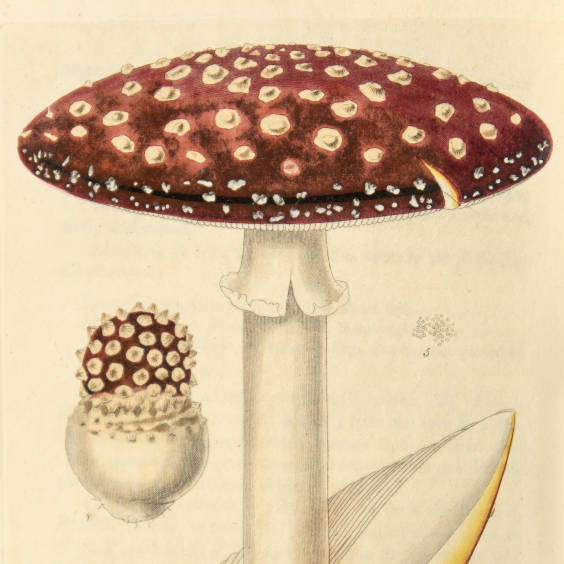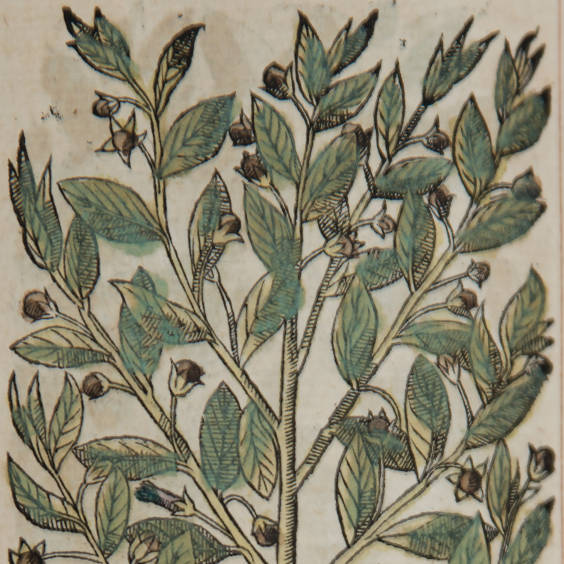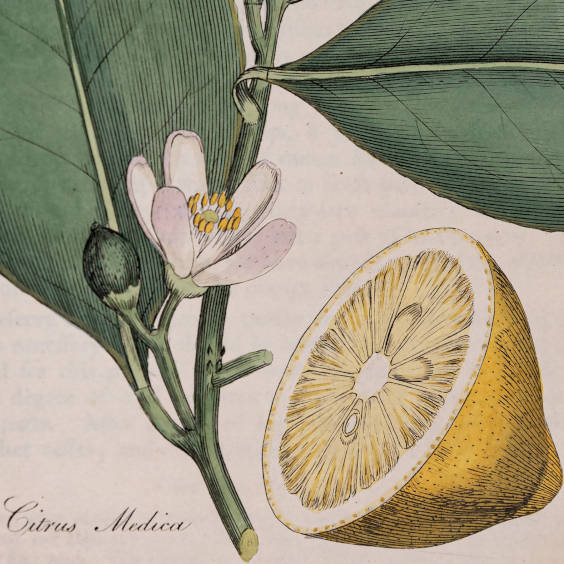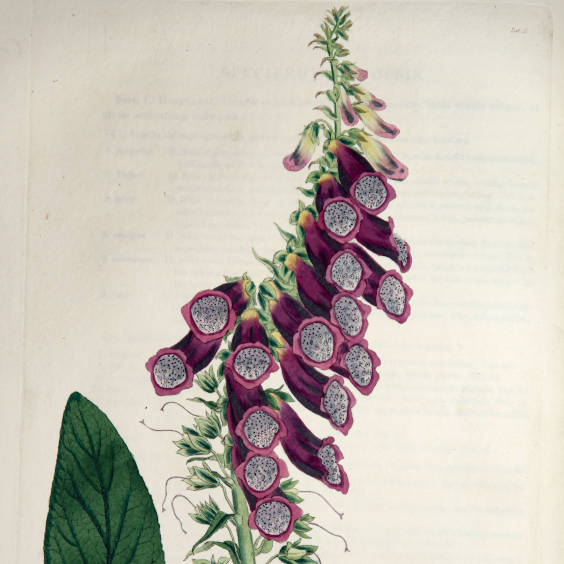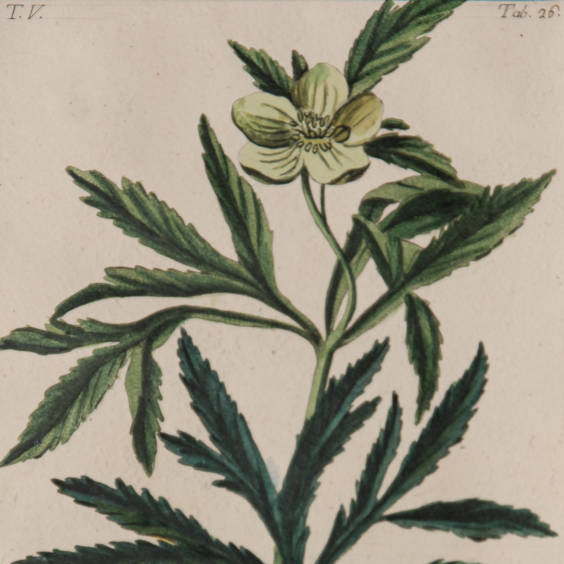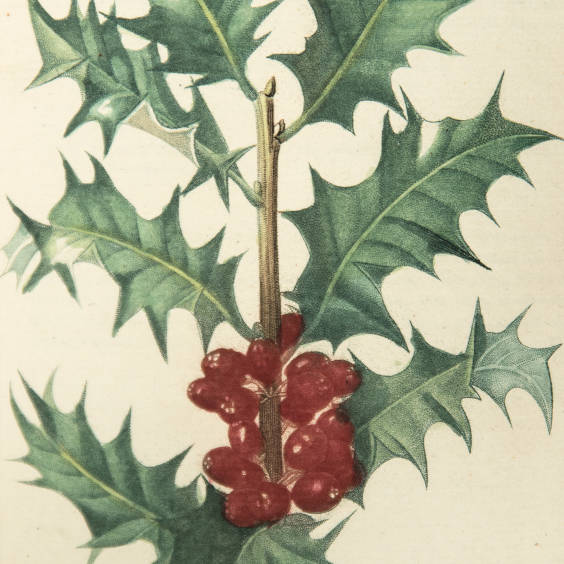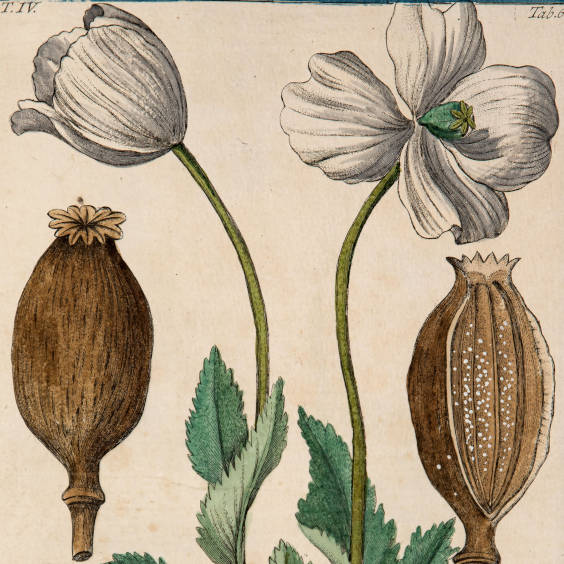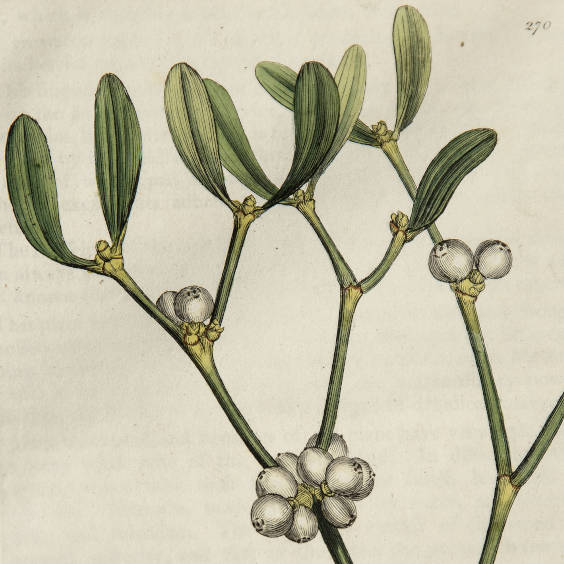-
Physicians' Flowers
An online exhibition from the Royal College of Physicians of Edinburgh
-
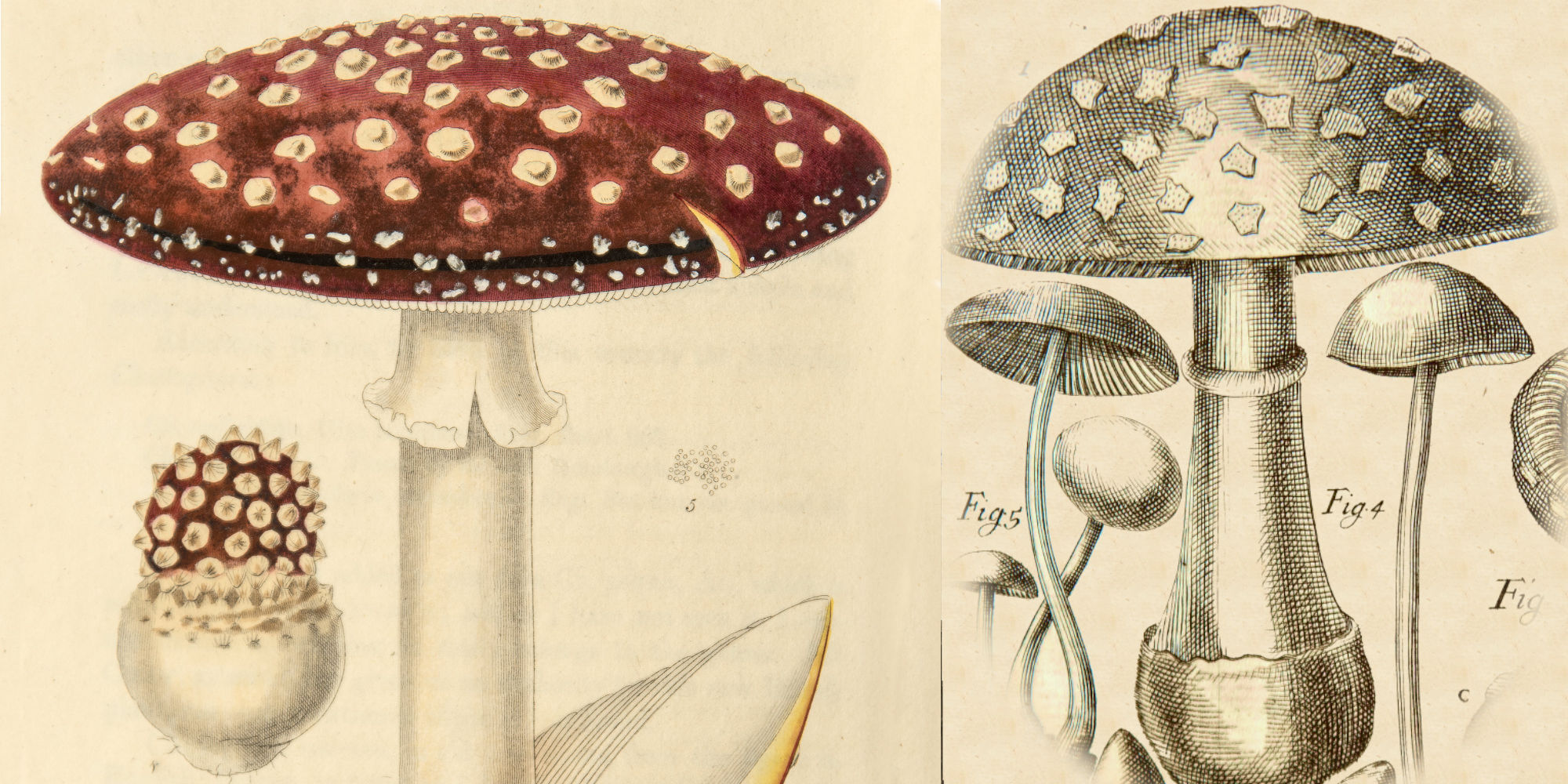
-
Amanita muscaria
The mushroom Amanita muscaria is highly toxic. Its common name, fly agaric, suggests that it was used to kill flies before it was replaced by arsenic.
Amanita has a long history of use in religious ceremonies as a hallucinogen.
Early 20th century research on fly agaric eventually led to the development of drugs such as pilocarpine and ipratropium that have value in glaucoma and diseases of the lungs.
-
-
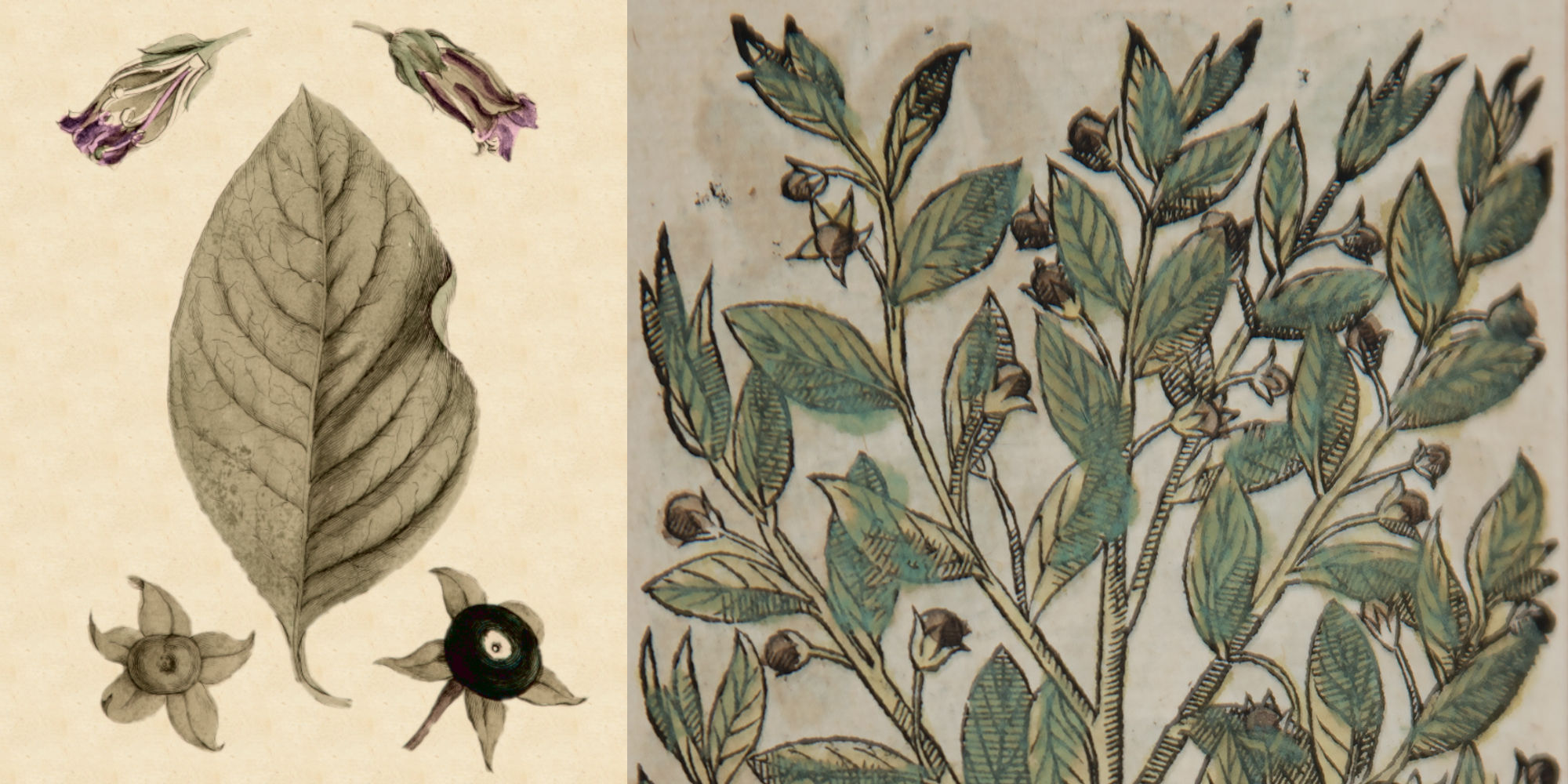
-
Atropa belladonna
Deadly nightshade is best known as a poison, but in small doses it also had a variety of medicinal uses.
In the Middle Ages it was believed that witches used belladonna as it was ‘one of the devil’s favourite plants’.
In the 19th century, atropine (an alkaloid derived from Atropa) became the treatment of choice for asthma, but the side effects were sometimes severe and even lethal. It can be useful in eye surgery because it dilates the pupil when used in a very refined state.
-
-
"And Botany I rank with the most valuable sciences, whether we consider its subjects as furnishing the principal subsistence of life to man and beast, delicious varieties for our tables, refreshments from our orchards, the adornments of our flower-borders, shade and perfume of our groves, materials for our buildings, or medicaments for our bodies."
(Thomas Jefferson)
-

-
Citrus limon
Lemon’s main medicinal value comes from its high vitamin C content.
Lemons were used in what is considered to be the first controlled therapeutic trial in 1747.
Scurvy was widespread on ships before the 19th century and many doctors tried and failed to find a cure. Dr James Lind, a Fellow of this College, was a ship surgeon on the HMS Salisbury. In 1747 he isolated 12 sailors suffering from scurvy and treated them with six different remedies. Oranges and lemons were the most effective.
-
-
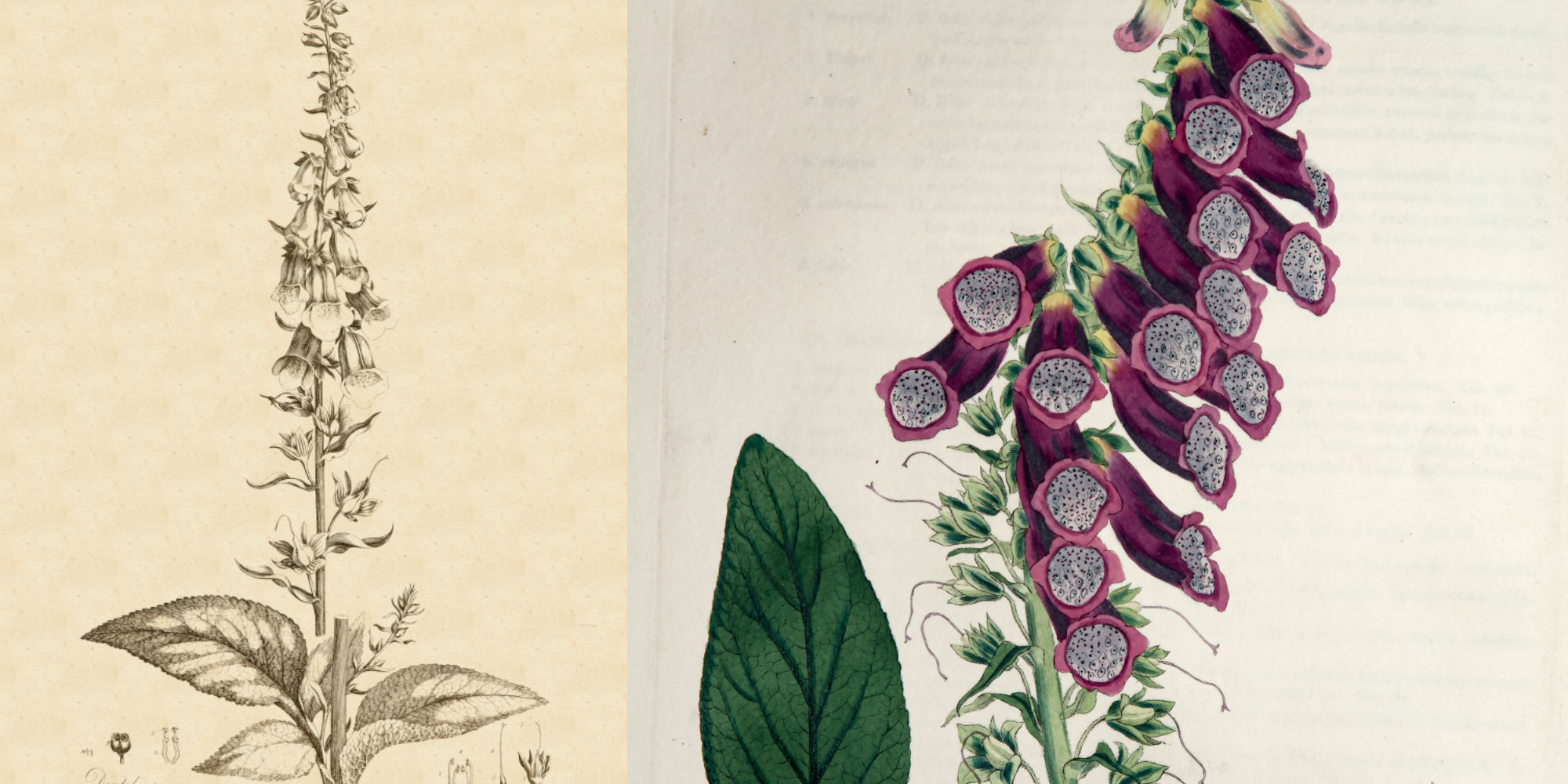
-
Digitalis purpurea
Foxglove is one of the most famous medicinal plants which has been used to treat heart conditions for centuries.
In 1785 Dr William Withering recognised that digitalis was the active ingredient.
Digitalis acts by slowing and regularising the heartbeat and increasing the blood flow to the kidneys. The patient produces a large volume of urine which helps to rid the body of excess fluid which makes the heart work more efficiently.
-
-
"Nomenclature, the other foundation of botany, should provide the names as soon as the classification is made... If the names are unknown knowledge of the things also perishes... For a single genus, a single name."
(Carolus Linnaeus)
-
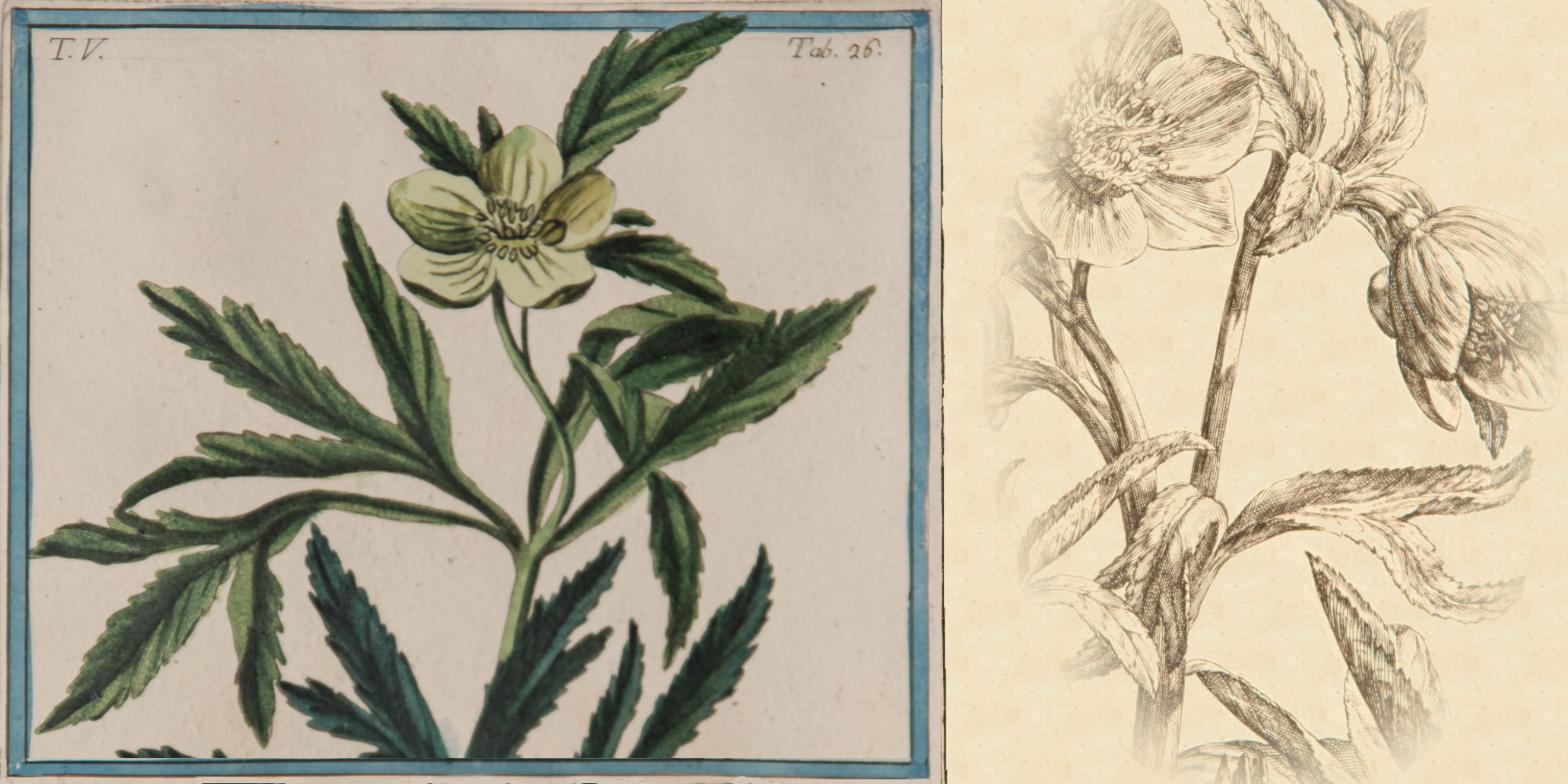
-
Helleborus niger
Black hellebore is a very poisonous plant that is toxic in all but the smallest doses.
It contains cardiac glycosides which have a similar action to the foxglove and it was used as a heart stimulant, though this treatment is no longer recommended.
It has also been used in the treatment of dropsy, amenorrhoea and nervous disorders.
-
-
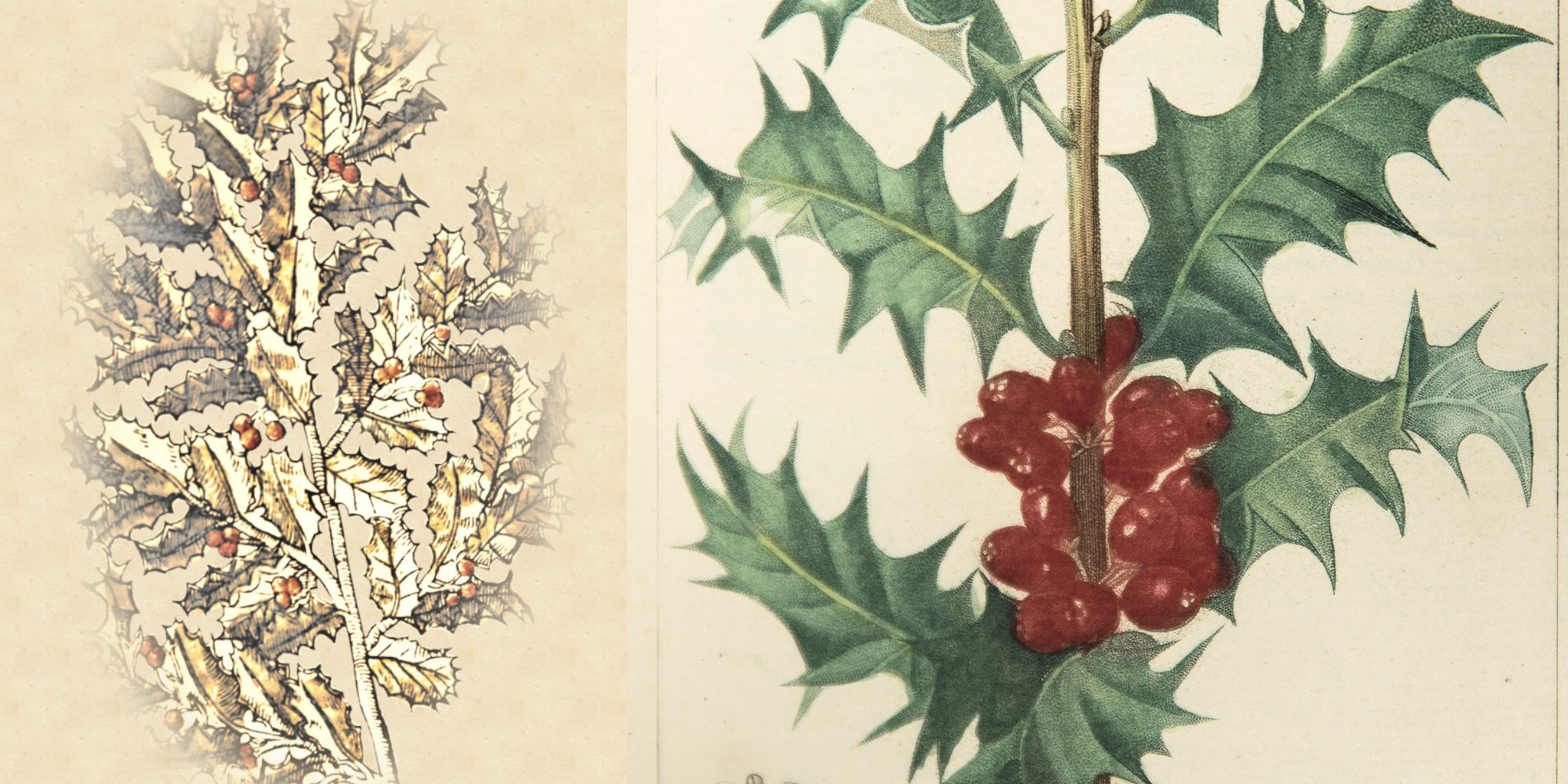
-
Ilex aquifolia
Ilex aquifolia is one of Britain’s few evergreen trees, commonly associated with Christmas.
It was seen as a fertility symbol and a charm against witches, goblins and the devil.
An infusion of dried holly leaves, which contain caffeine, was given for catarrh, pleurisy, rheumatism, hypertension and digestive problems. They were also used to reduce the severity of fevers.
-
-
"Botany, the science of the vegetable kingdom, is one of the most attractive, most useful, and most extensive departments of human knowledge. It is, above every other, the science of beauty."
(Joseph Paxton)
-
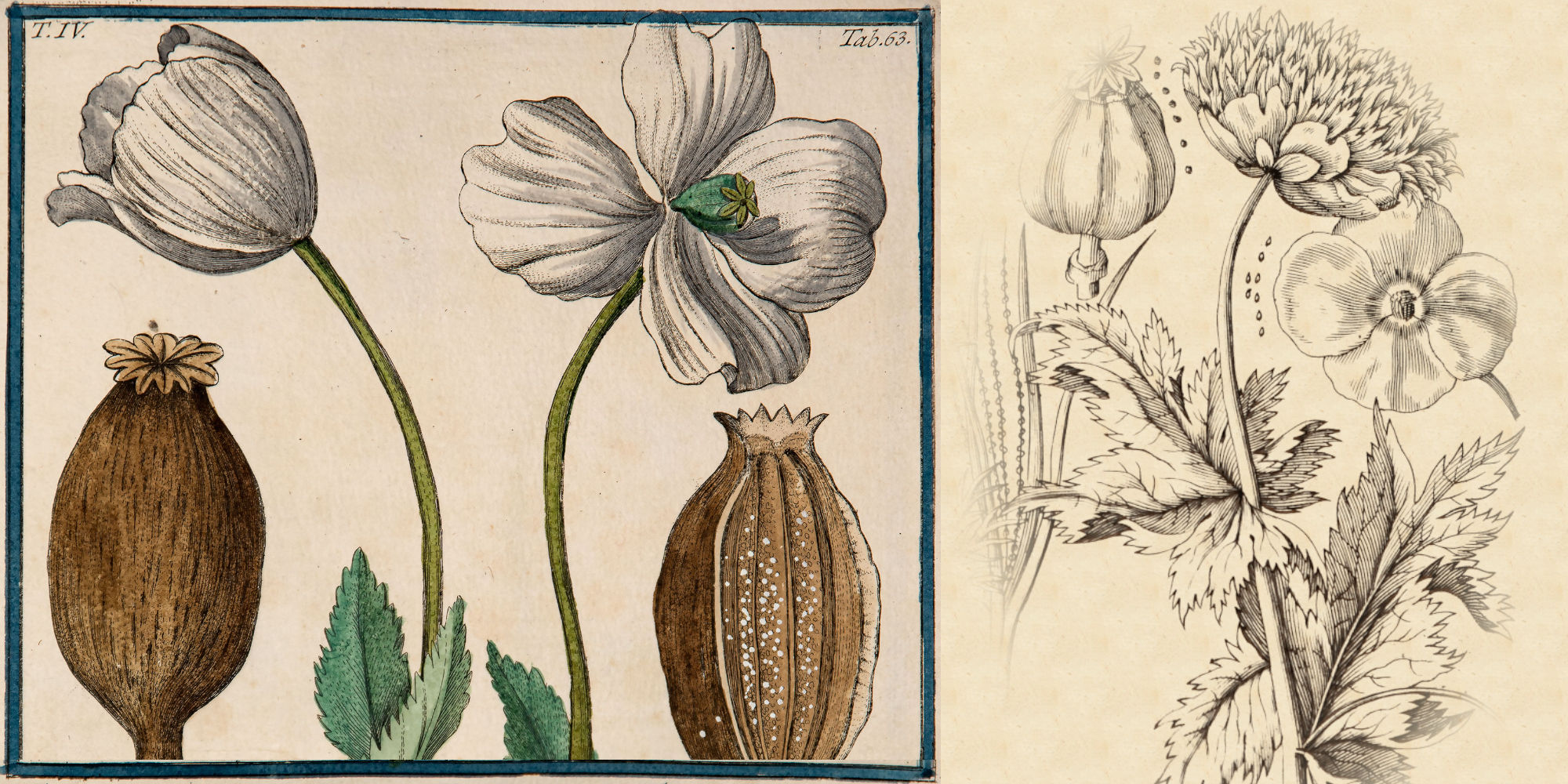
-
Papaver somniferum
Opium is an addictive narcotic drug derived from the unripe seedpods of the opium poppy.
Cultivation and consumption of opium dates back to the earliest years of human civilization. It was used as a painkiller in the Middle East and Asia and became popular in Europe in the 18th century.
It was used as a main ingredient in patent medicine (laudanum) which could be bought without prescription and many people became addicted before it was banned.
-
-
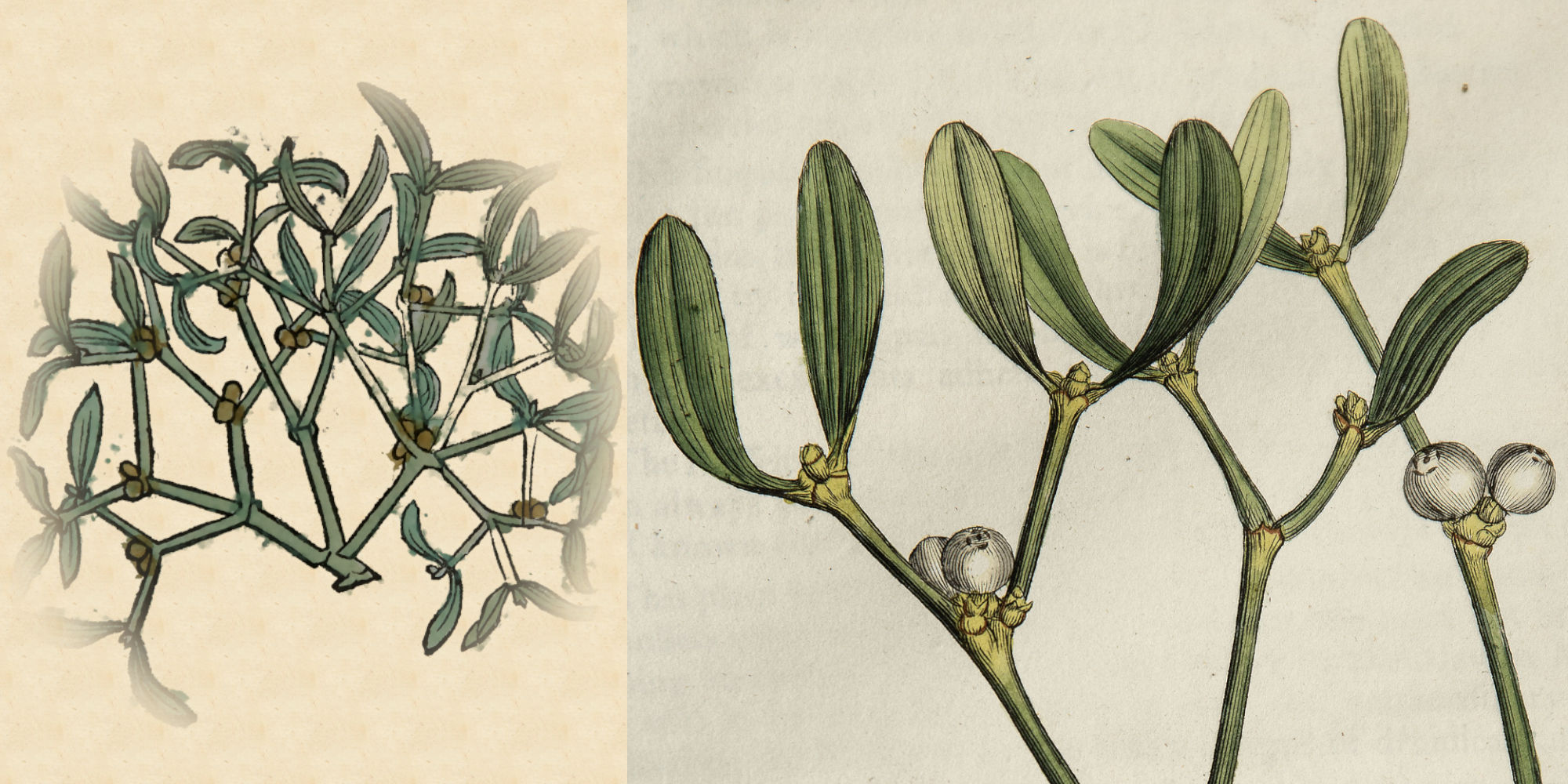
-
Variscum album
Mistletoe is a partial parasite that attaches to a host tree via sucker roots that absorb some water and nutrients from the host.
In the Middle Ages, it was believed that mistletoe had a variety of magical properties like keeping witches at bay.
The ancient Greeks used it as a pain reliever and for conditions like seizures, headaches, and arthritis.
-
-
Physicians' Flowers
An online exhibition from the Royal College of Physicians of Edinburgh
-
Amanita muscaria
The mushroom Amanita muscaria is highly toxic. Its common name, fly agaric, suggests that it was used to kill flies before it was replaced by arsenic.
Amanita has a long history of use in religious ceremonies as a hallucinogen.
Early 20th century research on fly agaric eventually led to the development of drugs such as pilocarpine and ipratropium that have value in glaucoma and diseases of the lungs.
-
Atropa belladonna
Deadly nightshade is best known as a poison, but in small doses it also had a variety of medicinal uses.
In the Middle Ages it was believed that witches used belladonna as it was ‘one of the devil’s favourite plants’.
In the 19th century, atropine (an alkaloid derived from Atropa) became the treatment of choice for asthma, but the side effects were sometimes severe and even lethal. It can be useful in eye surgery because it dilates the pupil when used in a very refined state.
-
"And Botany I rank with the most valuable sciences, whether we consider its subjects as furnishing the principal subsistence of life to man and beast, delicious varieties for our tables, refreshments from our orchards, the adornments of our flower-borders, shade and perfume of our groves, materials for our buildings, or medicaments for our bodies."
(Thomas Jefferson)
-
Citrus limon
Lemon’s main medicinal value comes from its high vitamin C content.
Lemons were used in what is considered to be the first controlled therapeutic trial in 1747.
Scurvy was widespread on ships before the 19th century and many doctors tried and failed to find a cure. Dr James Lind, a Fellow of this College, was a ship surgeon on the HMS Salisbury. In 1747 he isolated 12 sailors suffering from scurvy and treated them with six different remedies. Oranges and lemons were the most effective.
-
Digitalis purpurea
Foxglove is one of the most famous medicinal plants which has been used to treat heart conditions for centuries.
In 1785 Dr William Withering recognised that digitalis was the active ingredient.
Digitalis acts by slowing and regularising the heartbeat and increasing the blood flow to the kidneys. The patient produces a large volume of urine which helps to rid the body of excess fluid which makes the heart work more efficiently.
-
"Nomenclature, the other foundation of botany, should provide the names as soon as the classification is made... If the names are unknown knowledge of the things also perishes... For a single genus, a single name."
(Carolus Linnaeus)
-
Helleborus niger
Black hellebore is a very poisonous plant that is toxic in all but the smallest doses.
It contains cardiac glycosides which have a similar action to the foxglove and it was used as a heart stimulant, though this treatment is no longer recommended.
It has also been used in the treatment of dropsy, amenorrhoea and nervous disorders.
-
Ilex aquifolia
Ilex aquifolia is one of Britain’s few evergreen trees, commonly associated with Christmas.
It was seen as a fertility symbol and a charm against witches, goblins and the devil.
An infusion of dried holly leaves, which contain caffeine, was given for catarrh, pleurisy, rheumatism, hypertension and digestive problems. They were also used to reduce the severity of fevers.
-
"Botany, the science of the vegetable kingdom, is one of the most attractive, most useful, and most extensive departments of human knowledge. It is, above every other, the science of beauty."
(Joseph Paxton)
-
Papaver somniferum
Opium is an addictive narcotic drug derived from the unripe seedpods of the opium poppy.
Cultivation and consumption of opium dates back to the earliest years of human civilization. It was used as a painkiller in the Middle East and Asia and became popular in Europe in the 18th century.
It was used as a main ingredient in patent medicine (laudanum) which could be bought without prescription and many people became addicted before it was banned.
-
Variscum album
Mistletoe is a partial parasite that attaches to a host tree via sucker roots that absorb some water and nutrients from the host.
In the Middle Ages, it was believed that mistletoe had a variety of magical properties like keeping witches at bay.
The ancient Greeks used it as a pain reliever and for conditions like seizures, headaches, and arthritis.

